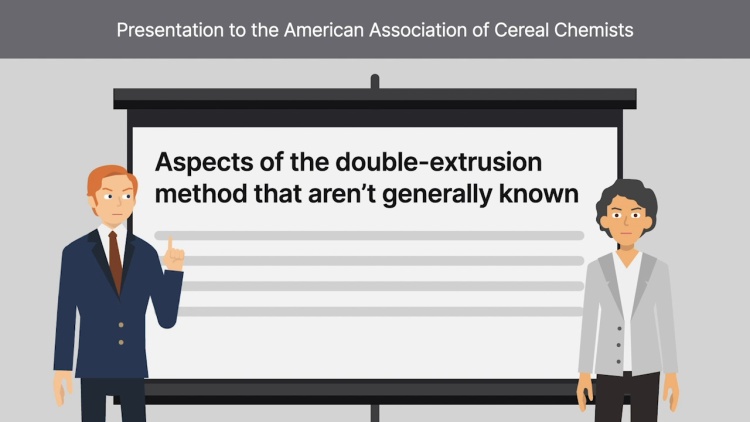In re Klopfenstein
United States Court of Appeals for the Federal Circuit
380 F.3d 1345 (2004)
- Written by Samantha Arena, JD
Facts
Carol Klopfenstein and John Brent (plaintiffs) invented a method for preparing foods using double-extruded soy cotyledon fiber to lower cholesterol levels. In 1998, the plaintiffs displayed their invention at a conference of cereal chemists. The plaintiffs’ display consisted of printed slides glued to poster boards. The slides presented extrusion-process data and a description of the double-extrusion process. The poster boards remained on display for two and one-half days at the conference. A month later, the poster boards were displayed again at a university agricultural experiment station. There were no disclaimers on the boards asking that the information not be reproduced. However, the slides were not photographed, distributed, or indexed for a library or catalogue. In 2000, the plaintiffs applied for a patent for their invention. The United States Patent and Trademark Office (PTO) (defendant) denied the application because all the application’s claims had been disclosed on the plaintiffs’ poster boards in 1998, more than one year before the patent application was filed. These disclosures barred the invention from patentability under the printed-publication bar in 35 U.S.C. § 102(b). The plaintiffs appealed the PTO’s determination, arguing that their poster boards could not be considered printed publications because the material was not distributed, copied, or indexed. The Patent and Trademark Office’s Board of Patent Appeals and Interferences (Board) upheld the PTO’s denial. The plaintiffs appealed the Board’s denial to the United States Court of Appeals for the Federal Circuit.
Rule of Law
Issue
Holding and Reasoning (Prost, J.)
What to do next…
Here's why 899,000 law students have relied on our case briefs:
- Written by law professors and practitioners, not other law students. 47,000 briefs, keyed to 994 casebooks. Top-notch customer support.
- The right amount of information, includes the facts, issues, rule of law, holding and reasoning, and any concurrences and dissents.
- Access in your classes, works on your mobile and tablet. Massive library of related video lessons and high quality multiple-choice questions.
- Easy to use, uniform format for every case brief. Written in plain English, not in legalese. Our briefs summarize and simplify; they don’t just repeat the court’s language.





